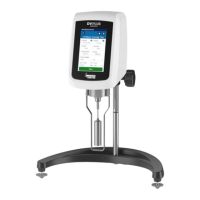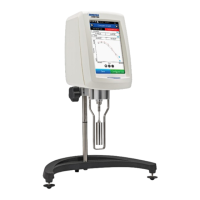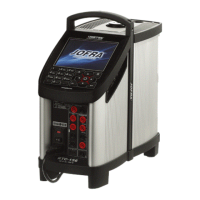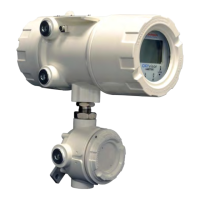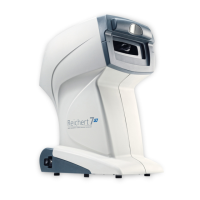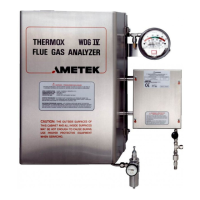AMETEK Brookeld Page 41 Manual No. M08-372-F1116
MODULUS Ratio of stress divided by strain during the
rst compression cycle (e.g., the slope of the
force:deformationcurve).Itisrepresentativeof
sample rigidity.
RESULTS: LOW-FAT FAT-FREE
HARDNESS (g) 122 227
WORK (mJ) 1592.7 3199.9
ADHESION (mJ) -246.4 -522.6
ADHESIVE FORCE (g) -58 -112
CONCLUSIONS: Creaminess of samples was evaluated as a comparison between low-fat and
fat-free samples. This is a comparative measure between two samples, but
doesgivegoodindicationoftheeffectofformulationontheprotein:protein
network and resulting gel set. Such a test would be excellent both within the
Quality and Development environments, where product matching as well as
process control could be facilitated.
The modulus values are also considerably different where the higher values
forthefat-freefatproductdenotethermer,moreboundconsistencyofthe
product.
EMPIRICAL Testconditionswhichwillaffectresultsgenerated:
FACTORS: 1. Sample size
2. Sample age
3. Sample temperature
4. Base and edge effects
5. Sample container and/or test probe employed
Sampleconditionswhichwilleffectresultsgenerated:
1. Fat content
2. Protein content
3. pH
4. Set/Stirred product
5. Syneresis and surface characteristics
6. Presence of inclusions e.g. fruit
7. Temperature and uniformity
RELATED TESTS: 45° cone penetrometer test utilizing hold until time function to determine
relaxation.
BIBLIOGRAPHY AND REFERENCES:
Anon. 1988. Facts About Yogurt. National Dairy Council, London.
Anon.1996.Yogurt:ATechnicalProle.NationalDairyCouncil,EducationDepartment.
Bylund, G. 1995. Diary Processing Handbook. Tetra Pak Processing Systems AB, Sweden.
Prentice, J. 1992. Dairy Rheology A Concise Guide. VCH Publishers, USA.
Tamime, A. and Robinson R. 1985. Yogurt Science and Technology. Pergamon Press Ltd., Oxford.
Varnam. A. and Sutherland, J. 1994. Milk and Milk Products - Technology, Chemistry and Microbioogy. Chapman and Hall,
Great Britain.
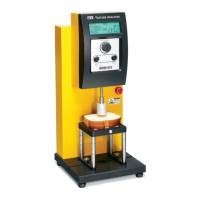
